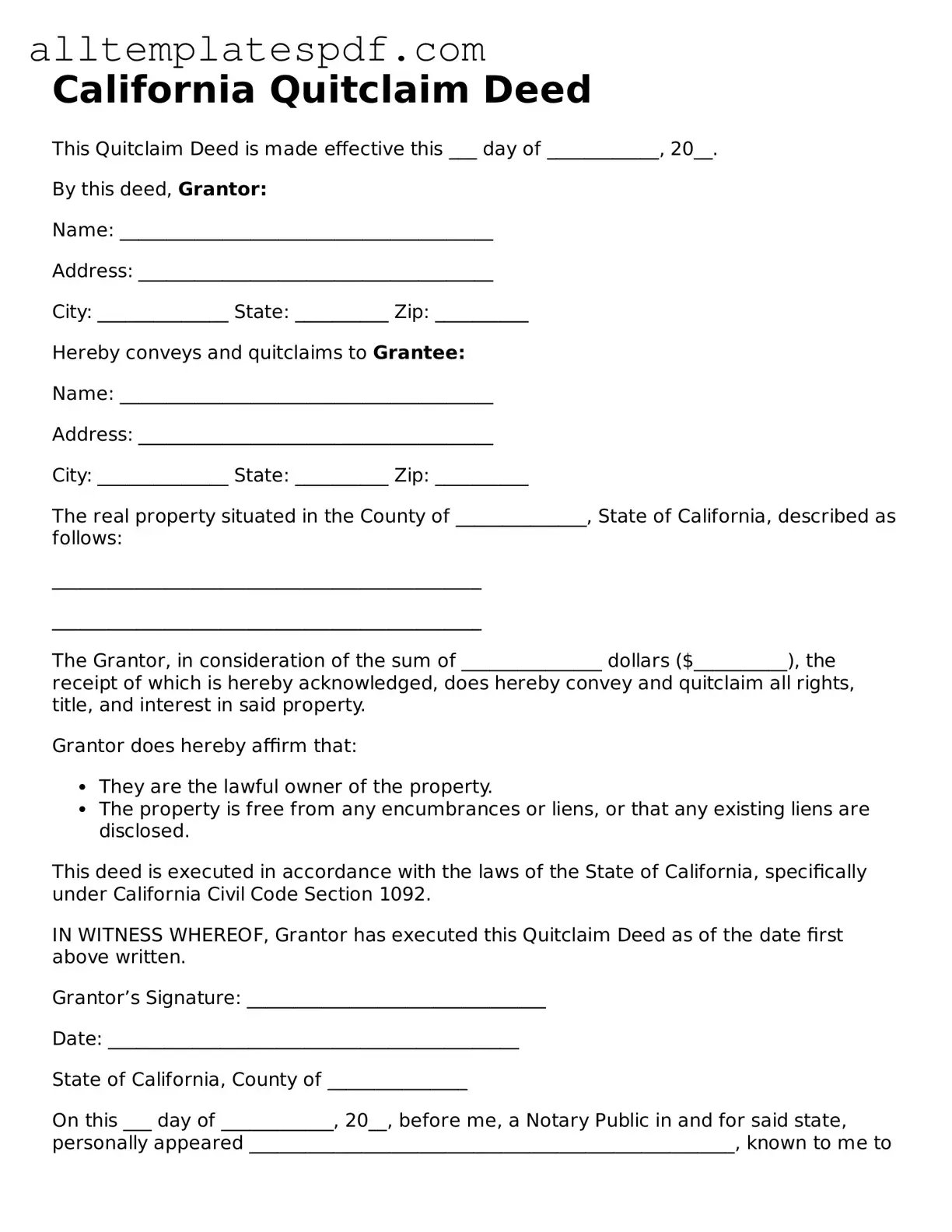Blank Quitclaim Deed Template for the State of California
A California Quitclaim Deed is a legal document that allows a property owner to transfer their interest in real estate to another party without making any guarantees about the title. This form is often used in situations such as transferring property between family members or clearing up title issues. To simplify the process, consider filling out the form by clicking the button below.
Open Editor
